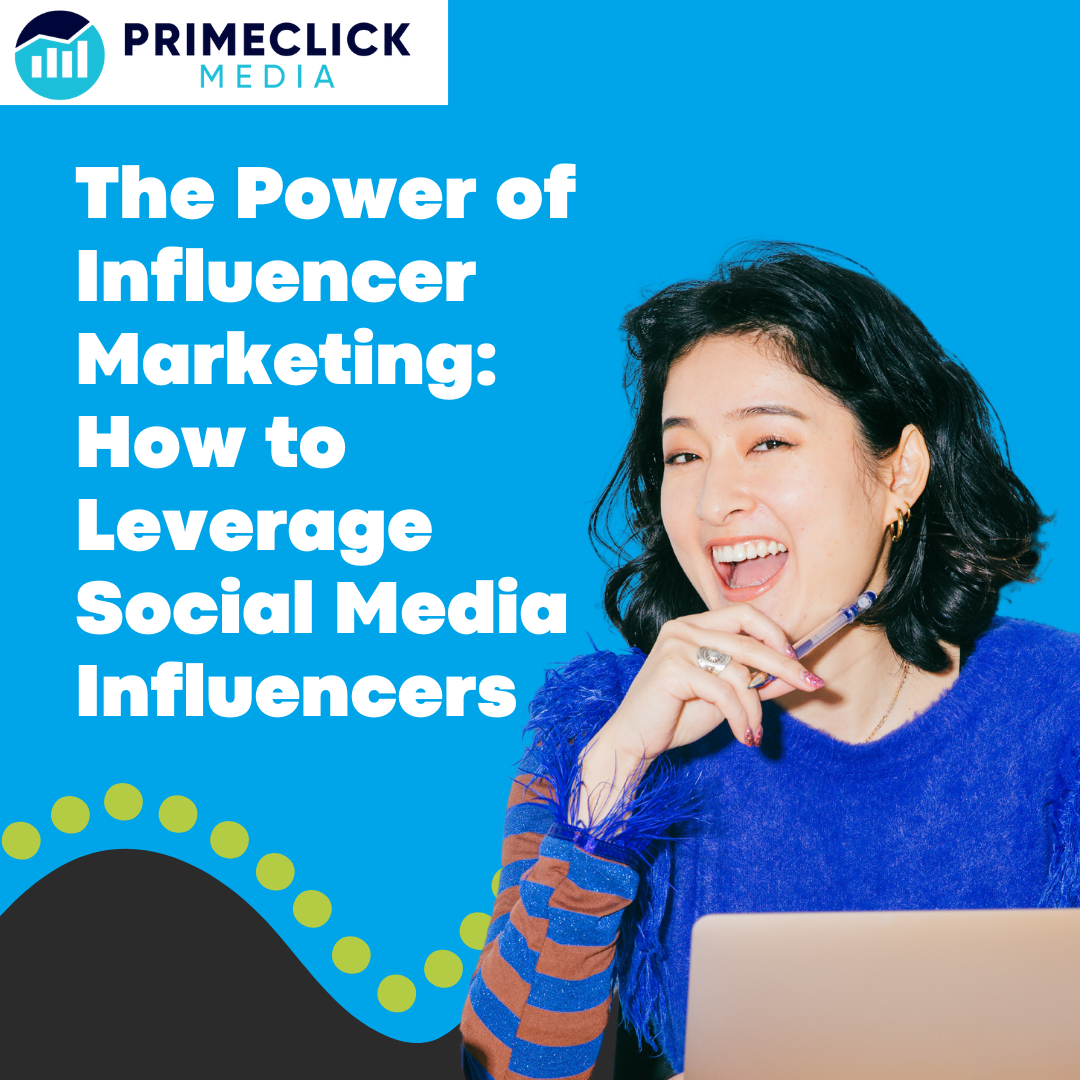Hey there, savvy marketers and social media enthusiasts! Are you ready to dive into the world of influencer marketing and harness its incredible potential? If you’ve been wondering how to take your brand or business to new heights, you’re in for a treat.
In this blog, we’ll explore the magic of influencer marketing and how collaborating with social media influencers can work wonders for your brand’s success. Get ready to be inspired and unleash the power of influencer marketing!
What Is Influencer Marketing And Who Are Influencers?
Influencer marketing is a form of marketing that involves collaborating with individuals who have a significant online presence and a dedicated following, known as influencers. These influencers have established credibility and authority in specific niches, and brands partner with them to promote products, services, or campaigns to their engaged audience.
Influencers can be individuals from various backgrounds, such as social media personalities, bloggers, content creators, celebrities, industry experts, activists, and more. They have the power to influence the purchasing decisions of their followers due to their authentic and trusted relationship with their audience.
Influencers are often recognized for their expertise, creativity, and ability to create engaging and relatable content. They may have a large following (mega-influencers and macro-influencers) or a more niche and loyal following (micro-influencers and nano-influencers).
The role of influencers in influencer marketing
- Promote Products and Services: Influencers collaborate with brands to showcase their products or services to their audience through sponsored posts, videos, reviews, or endorsements.
- Create Authentic Content: Influencers create content that resonates with their audience while incorporating the brand’s message naturally and authentically.
- Build Brand Awareness: By leveraging an influencer’s reach and engagement, brands can increase their visibility and reach new audiences.
- Drive Engagement and Conversions: Influencers can inspire their followers to engage with brand content and take action, leading to increased website traffic, sales, and conversions.
- Provide Valuable Insights: Influencers offer valuable feedback and insights from their audience, helping brands understand consumer preferences and trends better.
Influencer marketing has become a powerful strategy in the digital age, as consumers increasingly rely on recommendations from individuals they trust when making purchase decisions. By collaborating with influencers, brands can tap into their influence and credibility to establish meaningful connections with their target audience and achieve their marketing objectives.
Different Types Of Influencers
There are many different types of influencers, each with its audience and set of special skills. Here are some common types of influencers based on their follower count and niche:
Mega-Influencers
Mega-influencers have an extensive following, typically exceeding one million followers. They are often celebrities, public figures, or well-known industry experts. Mega-influencers can reach a massive audience, but their engagement rates may be lower due to their vast and diverse following.
Macro-Influencers
Macro-influencers have a significant following, typically ranging from 100,000 to one million followers. They are usually niche-specific experts, bloggers, or social media personalities. Macro-influencers can provide a good balance between reach and engagement.
Micro-Influencers
Micro-influencers have a smaller but highly engaged following, usually between 1,000 to 100,000 followers. They are considered experts in their niche and have a strong influence over their audience. Micro-influencers often have higher engagement rates and offer a more personal and authentic connection with their followers.
Nano-Influencers
Nano-influencers often have a small but close-knit following of between a few hundred and a few thousand people. They are everyday consumers who are passionate about specific topics or products. Nano-influencers often have the most authentic and engaged audience, making them highly valuable for niche marketing.
Industry Experts and Thought Leaders
These influencers are professionals, experts, or thought leaders in specific industries. They might not have a massive following like traditional influencers, but their expertise and credibility attract a niche audience seeking valuable insights and advice.
Celebrities and Public Figures
Celebrities and public figures from various fields, such as actors, musicians, athletes, and politicians, can have an enormous impact as influencers. Their fame and popularity can instantly draw attention to a brand or cause.
Brand Ambassadors
Brand ambassadors are influencers who have an ongoing relationship with a specific brand. They promote the brand consistently and authentically, helping to build brand loyalty and trust among their followers.
Bloggers and Content Creators
Bloggers and content creators produce valuable and engaging content, such as blog posts, videos, or podcasts, often within specific niches. They have loyal followers who trust their recommendations and expertise.
Social Media Personalities
Social media personalities gain popularity through their entertaining and relatable content on platforms like TikTok, Snapchat, or Instagram. They connect with their audience through humor, creativity, and authenticity.
Activists and Advocates
Influencers in this category use their platforms to raise awareness about social or environmental issues, inspiring their followers to take action and create positive change.
The right type of influencer for your marketing campaign depends on your goals, target audience, and budget. Consider the level of influence and engagement you need and how well the influencer’s niche aligns with your brand to make an informed choice.
Picking Up On Social Behavior
Picking up on social behavior is crucial for successful influencer marketing campaigns. Understanding the influencers’ behavior and the behavior of their followers will help you identify the right influencers, create authentic collaborations, and measure the campaign’s effectiveness. Here’s how to do it:
Research and Identify Potential Influencers
- Start by researching potential influencers within your niche. Look for influencers whose values align with your brand and who have an engaged and relevant audience.
- Pay attention to how they interact with their followers, the type of content they share, and their overall tone and style.
Observe Engagement and Responsiveness
- Engagement is a key indicator of an influencer’s impact on their audience. Look for influencers who actively respond to comments, messages, and mentions.
- High engagement suggests a strong connection between the influencer and their followers, making their recommendations more influential.
Analyze Content Quality and Relevance
- Review the quality of the influencer’s content. Look for creativity, authenticity, and relevance to your brand or industry.
- Avoid influencers who promote controversial or inappropriate content that may negatively impact your brand’s reputation.
Study Audience Demographics
- Examine the demographics of the influencer’s audience, such as age, location, gender, and interests. Make sure that their target market is in line with yours.
- A well-matched audience increases the likelihood of your influencer marketing campaign resonating with potential customers.
Track Influencer Metrics
- Use social media analytics tools to track the influencer’s performance metrics, such as follower growth rate, engagement rate, and reach.
- These metrics will help you assess the influencer’s effectiveness and determine if their audience aligns with your campaign goals.
Look for Genuine Advocacy
- Authenticity is key in influencer marketing. Seek influencers who genuinely use and appreciate your products or services.
- Influencers who are already advocates of your brand will create more authentic and impactful content for your campaign.
Monitor Influencer-Brand Fit
- Assess the influencer’s past collaborations to ensure they have previously worked with brands that align with your industry or values.
- Influencers with a consistent brand fit are more likely to integrate your products seamlessly into their content.
Understand Influencers’ Communication Style
- Each influencer has a unique communication style. Pay attention to how they convey information, engage with their audience, and present sponsored content.
- Ensure the influencer’s communication style aligns with your brand’s tone and values.
Get Started With Influencer Marketing
Getting started with influencer marketing can be an exciting venture for your brand. Follow these steps to kickstart your influencer marketing journey:
Define Your Goals
Determine what you want to achieve with influencer marketing. Whether it’s increasing brand awareness, driving website traffic, or boosting sales, having clear objectives will guide your influencer selection and campaign strategy.
Identify Your Target Audience
Understand your target audience and their preferences. This will help you find influencers whose followers align with your potential customers.
Research Influencers
Use influencer discovery tools or manually search social media platforms for influencers in your niche. Look for influencers with a significant and engaged following, as well as those whose values align with your brand.
Check Authenticity and Engagement
Verify the authenticity of potential influencers by reviewing their content, engagement metrics, and audience demographics. Look for genuine interactions, as high engagement indicates a strong connection with their audience.
Reach Out to Influencers
Once you’ve identified potential influencers, initiate contact. Reach out with a personalized message expressing your interest in a collaboration. Be clear about your campaign goals, compensation, and any expectations.
Negotiate Terms and Agreements
Negotiate terms, such as the type of content the influencer will create, the posting schedule, and compensation. Ensure that both parties agree on the campaign details before proceeding.
Create Engaging Campaign Content
Collaborate with the influencer to create content that resonates with their audience and showcases your brand’s message effectively. Encourage the influencer to infuse their unique style and creativity into the content.
Monitor and Measure Results
Throughout the campaign, track key performance indicators (KPIs) to evaluate its success. Monitor metrics like engagement, reach, website traffic, and conversions to assess the campaign’s impact.
Build Authentic Relationships
Cultivate authentic relationships with influencers. Focus on long-term partnerships that can lead to continuous brand advocacy and increased trust among their audience.
Stay Compliant and Transparent
Adhere to the guidelines and regulations set by the relevant advertising and influencer marketing authorities. Ensure that influencers disclose sponsored content transparently.
Analyze and Optimize
After the campaign, analyze the results and gather insights. Determine what went well and what needs to be improved. Use these learnings to optimize future influencer marketing efforts.
Stay Updated on Trends
Influencer marketing trends and best practices are continuously evolving. Stay updated with the latest industry trends to keep your influencer marketing strategies fresh and effective.
Conclusion
There you have it, influencer marketing enthusiasts! Embrace the power of influencer marketing and leverage social media influencers to take your brand to new heights. Remember, it’s all about finding the right influencers, fostering authentic collaborations, and measuring success along the way.
So, roll up your sleeves, get creative, and watch your brand flourish with the magic of influencer marketing. Get ready to soar to new levels of success and leave a lasting impact on your target audience!





